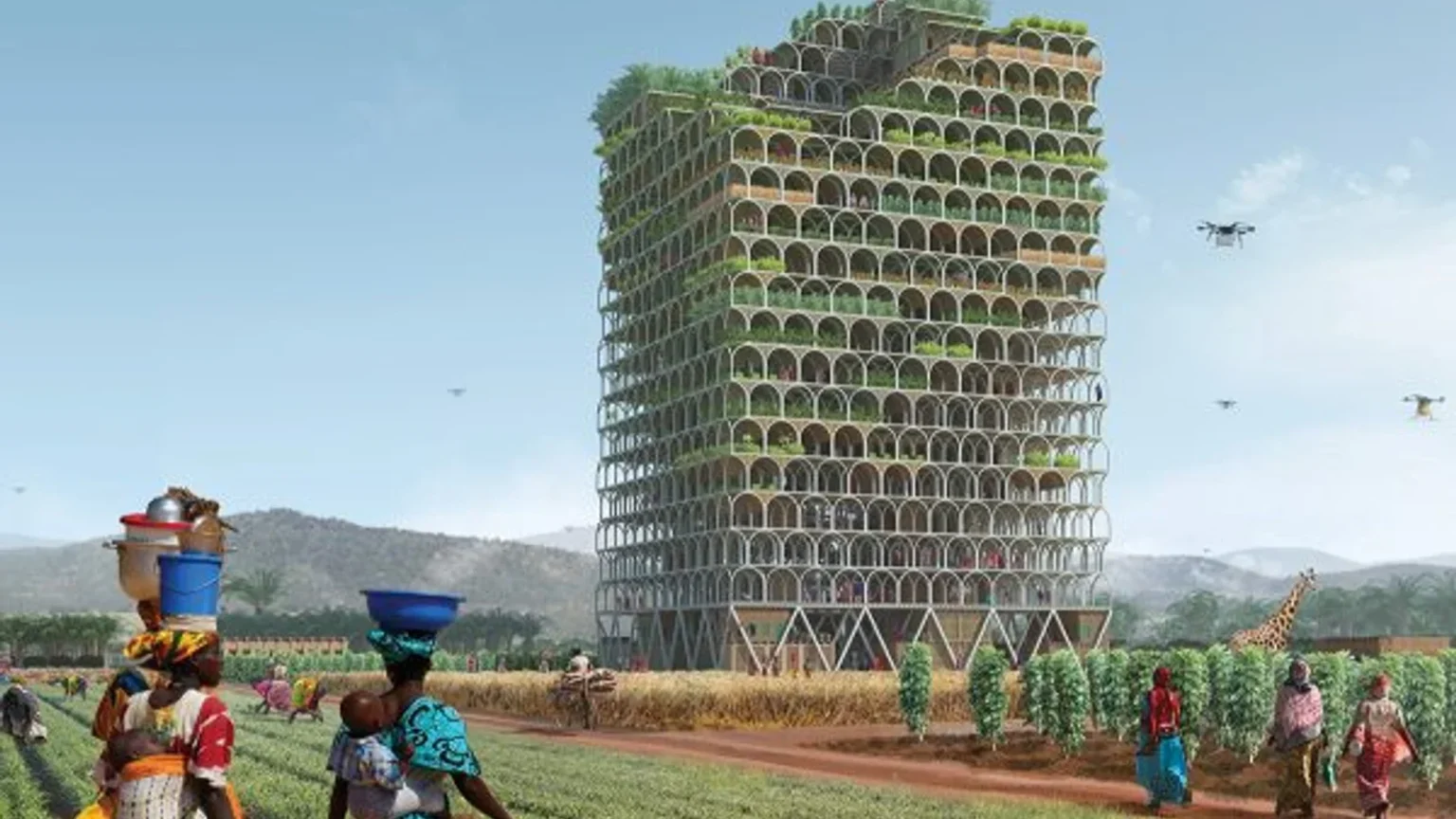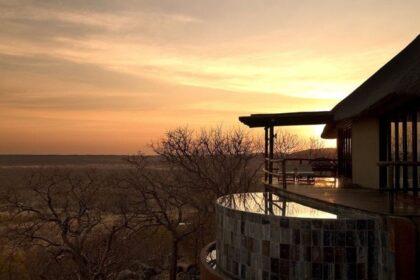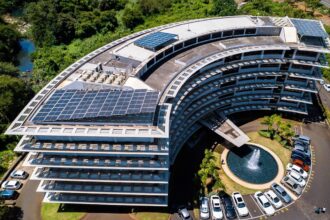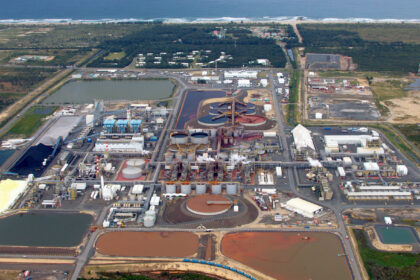At a Glance
- Mashambas towers combine vertical farming, training centers, and markets to support African smallholders.
- The design offers movable, modular solutions to enhance food security and rural development.
- Critics highlight cost, feasibility, and crop limitations in adapting tower farms to local needs.
In Africa’s search for new farming solutions, the Mashambas tower offers a bold vision. Designed by Polish architects Pawel Lipiński and Mateusz Frankowski, blends vertical farming with classrooms and marketplaces inside a movable high-rise.
Its supporters say it could help smallholder farmers earn more and lift families out of poverty. Critics question whether the model is simply too expensive to take root.

A tower built for farmers, not cities
First unveiled in 2017, the design won an international architecture prize for its ambition. Drawings show stacked floors for crops, training halls, and even childcare centers, all wrapped around a central column.
At ground level, space is reserved for a cooperative market and cold storage. Higher up, rooms could distribute seeds, host workshops, and hold community meetings.
“It is not just a building; it is an accelerator for farmers,” one early supporter wrote.

Hopes and hard questions
The tower is meant to be modular and movable. Once a community reaches self-sufficiency, the structure could be dismantled and rebuilt elsewhere. Proponents say that flexibility matters in rural regions where agricultural support is limited.
But specialists raise doubts. “Vertical farming works best with leafy greens and vegetables. It won’t replace maize or cassava,” said an agronomist in Nairobi. Others point to the high costs of power and maintenance, arguing that such a system may be out of reach for villages struggling with basic infrastructure.
Echoes in the real world
While Mashambas itself has not been built, parts of its vision are already showing up in smaller projects. In Cape Verde and Kenya, off-grid aeroponic towers now supply lettuce and herbs to hotels and local markets.
In Ghana, startups are developing controlled-environment farms that stock supermarkets. These efforts suggest that pieces of the Mashambas model may succeed when adapted to local needs.
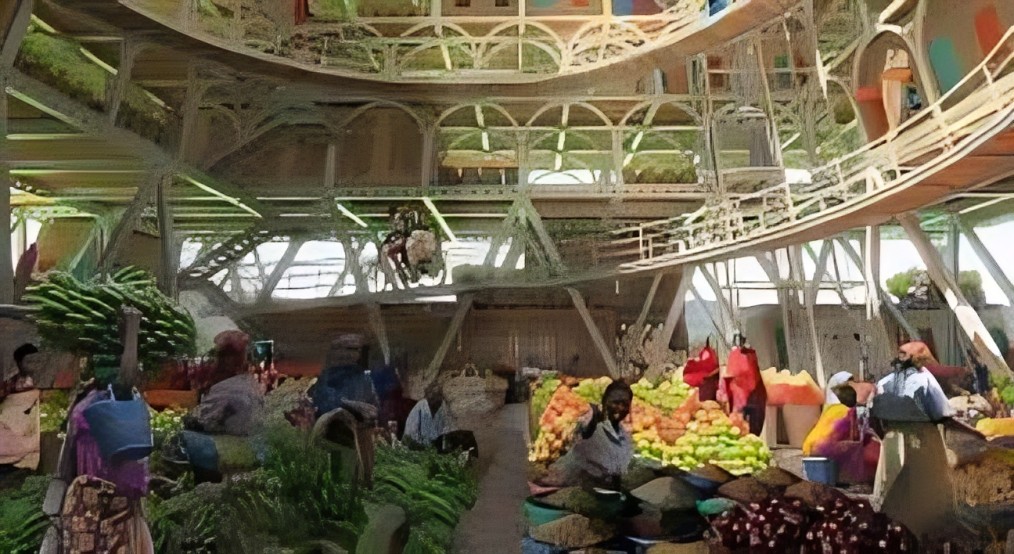
The money gap
Financing remains the toughest barrier. Donors and development banks are pushing climate-smart farming, but a tower of this scale would require a blend of grants, loans, and private capital.
Without buy-in from local farmers, skeptics warn, such projects risk becoming showpieces with little real impact. “Farmers need training and market access first. Technology should come second,” said a cooperative leader in Kumasi.
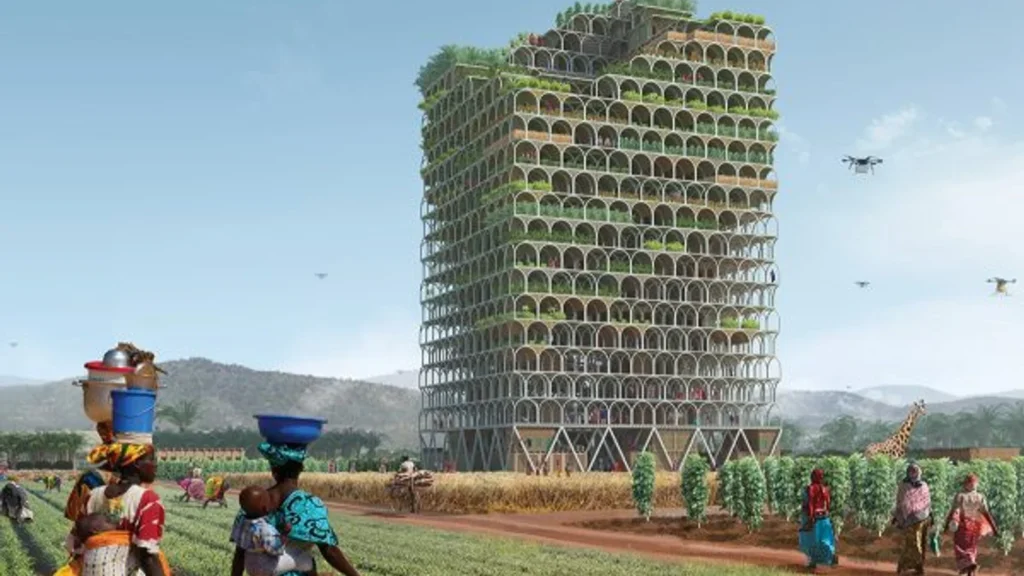
What lies ahead
The Mashambas tower remains on paper, but the debate it sparked is real: how to link food security, innovation, and rural livelihoods.
A pilot, if launched, would test whether futuristic design can deliver practical gains for Africa’s smallholders.
For now, the tower stands more as a symbol—of ambition and imagination on one side, and the hard realities of farming on the other.

